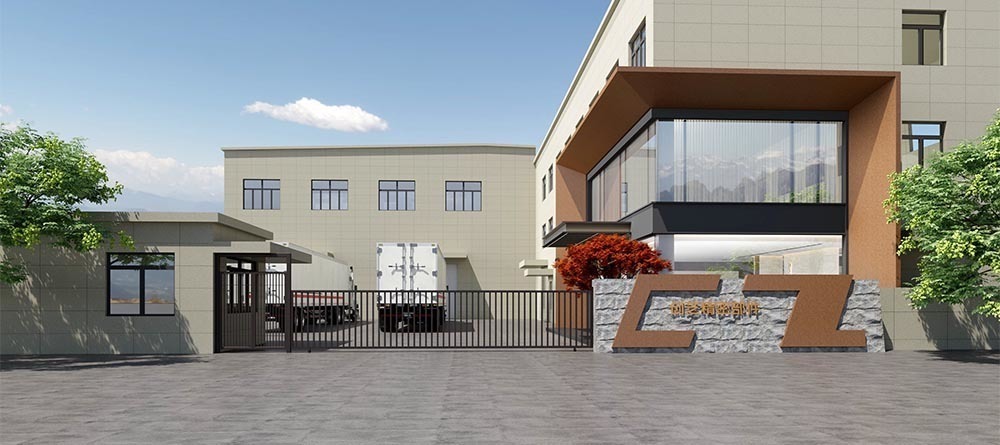
Apr 07,2024
Introduction of plating process for repairing old aluminum alloy parts
Aluminum and aluminum alloy electroplating is more difficult, because aluminum has a strong affinity for oxygen, the surface is easy to oxidize; Aluminum is an amphoteric metal, which is unstable in acid and alkali. The potential of aluminum is very negative, and it is easy to be etched and replaced with plated metal in electroplating solution. The expansion coefficient of aluminum is larger than that of most metals, so the coating is easy to bubble and fall off, affecting the binding force.
The key to aluminum and aluminum alloy electroplating is special pre-plating treatment to remove the natural oxide film and prevent it from re-forming, and to prevent the replacement reaction when the aluminum parts are immersed in the electrolyte. As a factory for the Navy to overhaul aircraft, we often encounter aluminum and aluminum alloy plating during the repair process. Through the experiment, the best process conditions were found out. The surface of aluminum alloy plated parts not only has good gloss, but also has good adhesion and corrosion resistance, which meets the requirements of navigation marks. This paper introduces the plating process for the repair of old aluminum alloy parts.
1 Process Flow
Degreasing (degreasing) → removing the old coating → two cleaning → alkali etching → two cleaning → removing ash and scale (light) → two cleaning → one zinc precipitation → two cleaning → removing the zinc layer → two cleaning → two cleaning → secondary zinc precipitation → sulfuric acid neutralization and activation → cleaning → chemical nickel plating → two cleaning → activation → pickax plating → two cleaning → passivation → two cleaning → two cleaning → blow dry → aging → inspection library.
2 Description of main process
Composition and process conditions of 2.1 degreasing liquid
Sodium hydroxide 40 a 609/L,70 a 90 "C, 1 a Zmin.
Serious oil first use organic solvent cleaning.
2.2 removal of old plating
Removal of the old coating is one of the key processes of aluminum alloy tin plating.
2.2.1 Solution composition and operating conditions for removing the old layer
Nitric acid money 1 0 a 150 to leave l, room temperature, back to the end.
2.2.2 Solution composition and operating conditions for removing old zinc layer
Sulfuric acid 10 a 150 to leave L, room temperature, retreat.
2.2.3 Removal of old oxide film solution composition and operating conditions Sodium hydroxide 40-609/L,50-90 "C, until it is exhausted.
2.24 removal of Ni a P alloy solution composition and process conditions
Concentrated nitric acid 7 00mL/L, sodium chloride 30 a 409/L, six methyl four amine 6 a 109/L, urea 15 a ZoglL, room temperature.
(1) The parts shall be dried or blown dry with cold air before deplating to prevent the concentration of nitric acid from being reduced by bringing water and causing the substrate to be corroded.
(2) The parts that have been deplated should be cleaned quickly to avoid a layer of black oxide film on the surface after deplating.
Aluminum alloy electroless nickel plating layer is generally commonly used concentrated nitric acid to remove. Although the oxidation of concentrated nitric acid is very strong, but the corrosion rate of concentrated nitric acid on Ni a P alloy layer is slow, and a large amount of No two gas is produced when removing, which is very polluting to the environment. Precision parts electroless plating Ni a P alloy layer after deplating, concentrated nitric acid on the base metal corrosion amount is often exceeded, especially for bolt parts over corrosion is particularly obvious. In order to overcome the shortcomings of over-corrosion of bolt parts by removing the electroless nickel plating layer, we have finally screened out the above nickel removal process after hundreds of tests. In the removal of Ni a P alloy layer, the corrosion of the substrate is very small, not easy to over corrosion, the gas is less, can ensure the quality of plating, improve the working environment
Related News
May 22,2024
High-speed computer gong machine tool function debugging
High-speed computer gongs use precision level and other testing tools, mainly by adjusting the shim iron way to fine-tune the level of the main bed of the machine tool, so that the geometric accuracy of the machine tool reaches the allowable tolerance range;
May 22,2024
CNC lathe processing core maintenance maintenance knowledge
As a precision CNC machine tool, it is necessary to do daily maintenance and maintenance to ensure the normal and long-term stable operation of the machine tool. What knowledge does the processing core have.
May 22,2024
Machining Surface Roughness and Factors Affecting Surface Roughness
Surface roughness is one of the important marks to measure the quality of the machined surface, which has a great influence on the wear resistance, corrosion resistance, fatigue strength and fit properties of the parts. However, there are many factors affecting surface roughness in processing. In order to achieve good surface roughness, we will understand what these factors are.
May 22,2024
Machining automation production line can be in the case of no human intervention in accordance with the provisions of the program or instruction automatic operation or control of the process, the goal is "stable, accurate, fast". At present, it has been used in the production of casting, forging, stamping, heat treatment, welding, cutting and mechanical assembly. Through the use of machining automation production lines can not only liberate people from heavy manual labor, part of mental labor and harsh and dangerous working environment, but also expand the function of human organs, greatly improve labor productivity, and enhance human understanding of the world and the ability to transform the world.









